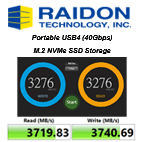Top Data Predictions for 2024
By Alluxio founder, chairman and CEO
This is a Press Release edited by StorageNewsletter.com on February 8, 2024 at 2:02 pmAlluxio, Inc. ‘s founder, chairman and CEO Haoyuan (H.Y.) Li forecasts major developments in AI, cloud, data and analytics, devops and storage in 2024. Data strategies will continue to require solutions that enable enterprises to manage complex data across diverse sources, optimize performance, scale in hybrid/multi-cloud environments, and operate efficiently.
‘s founder, chairman and CEO Haoyuan (H.Y.) Li forecasts major developments in AI, cloud, data and analytics, devops and storage in 2024. Data strategies will continue to require solutions that enable enterprises to manage complex data across diverse sources, optimize performance, scale in hybrid/multi-cloud environments, and operate efficiently.
He outlines the following major trends that guide his predictions:
AI/ML
- Compute Power is the New Oil – The soaring demand for GPUs has outpaced industry-wide supply, making specialized compute with the right configuration a scarce resource. Compute power has now become the new oil, and organizations are wielding it as a competitive edge. In 2024, we anticipate even greater innovation and adoption of technologies to enhance compute efficiency and scale capacity as AI workloads continue to explode. In addition, specialized AI hardware, like TPUs, ASICs, FPGAs and neuromorphic chips, will become more accessible.
- Moving GenAI from Pilots to Production – GenAI is influencing organizations’ investment decisions. While early GenAI pilots show promise, most organizations remain cautious about full production deployment due to limited hands-on experience and rapid evolution. In 2023, most organizations are on small and targeted trials to assess benefits and risks carefully. As GenAI technologies mature and become more democratized through pre-trained models, cloud computing, and open-source tools, budget allocations will shift more heavily toward GenAI in 2024.
- Balancing In-House and Vendor-Provided LLMs – To leverage the power of LLMs, organizations need to decide between building their own models, utilizing a closed-source model like GPT4 via APIs, or fine-tuning a pre-trained open-source LLM. In 2024, as LLMs keep iterating, organizations would not want to be “locked in” to one model or one vendor. They will likely adopt a hybrid approach, balancing the use of pre-trained models with developing in-house custom models when there are tighter privacy, IP ownership, and security requirements.
- Green AI – In 2024, more organizations will recognize the pressing sustainability challenges posed by AI projects as adoption accelerates. Technological advancements like optimized data architectures, reduced data copies, and renewable energy tapping will help. However, technology alone is not enough. Organizations will also need to implement governance processes and human-centered values that ensure AI projects drive business value without negatively impacting the environment. Organizations that proactively embrace green AI principles in 2024 will gain a competitive advantage and build public trust.
Data and Analytics
Overcoming Data Silo Challenges – Data silos remain a challenge for organizations – many analytics and AI systems spread across regions, clouds, and platforms, resulting in a vast amount of data duplication and separate governance models. In 2024, to accelerate time-to-insights and scale analytics and AI initiatives, organizations will increasingly need to manage distributed data. More will develop data strategies for unified management of scattered data through flexible orchestration, abstraction, and virtualization.
Cloud
Cloud Cost Optimization Will be More Strategic in 2024 – In 2024, cloud cost optimization will become more strategic. Beyond tactical cost management, such as rightsizing and adopting spot instances, organizations will undertake more strategic evaluations and optimizations. These will modernize and optimize cloud-deployed systems for cost-efficiency, with some workloads potentially reverting to on-premises. Cloud ROI depends on holistic optimization spanning architecture designs, cost monitoring, negotiations with cloud vendors, and continuous re-evaluation.
Hybrid and Multi-cloud Acceleration
In 2024, the adoption of hybrid and multi-cloud strategies is expected to accelerate, both for strategic and tactical reasons. From a strategic standpoint, organizations will aim to avoid vendor lock-in and will want to retain sensitive data on-premises while still utilizing the scalable resources offered by cloud services. Tactically, due to the continued scarcity of GPUs, companies will seek to access GPUs or specific resources and services that are unique to certain cloud providers. A seamless combination of cross-region and cross-cloud services will become essential, enabling businesses to enhance performance, flexibility, and efficiency without compromising data sovereignty.
DevOps
The Integration of DevOps and MLOps to Streamline AI Projects – In 2024, MLOps will increasingly integrate with DevOps to create more streamlined workflows for AI projects. The combination of MLOps and DevOps creates a set of processes and automated tools for managing data, code, and models to enhance the efficiency of ML platforms. Data scientists and software developers will get the freedom to transition to high-value projects without the need for manually overseeing models. The trend is driven by streamlining the process of delivering models to production to reduce time-to-value.
Storage
From Specialized Storage to Optimized Commodity Storage for AI Platform – The growth of AI workloads has driven the adoption of specialized HPC storage optimized for speed and throughput. But in 2024, it is expected a shift towards commoditized storage. Cloud object stores, NVMe flash, and other storage solutions will be optimized for cost-efficient scalability. The high cost and complexity of specialized storage will give way to flexible, cheaper, easy-to-manage commodity storage tailored for AI needs, allowing more organizations to store and process data-intensive workloads using cost-effective solutions.














 Subscribe to our free daily newsletter
Subscribe to our free daily newsletter


